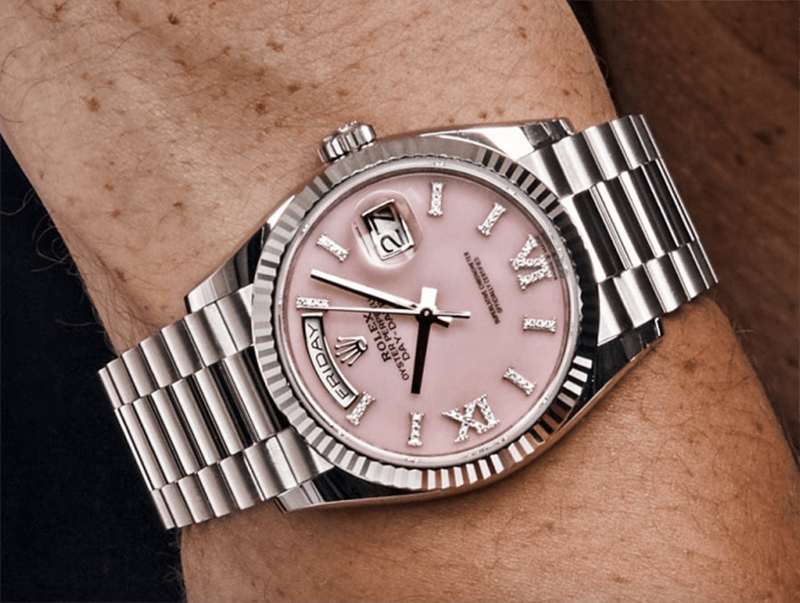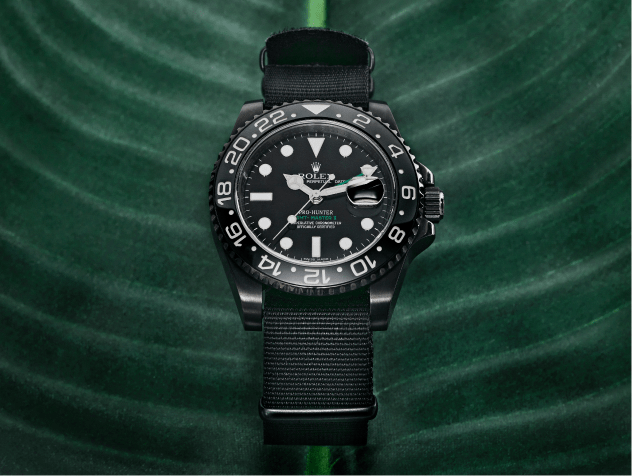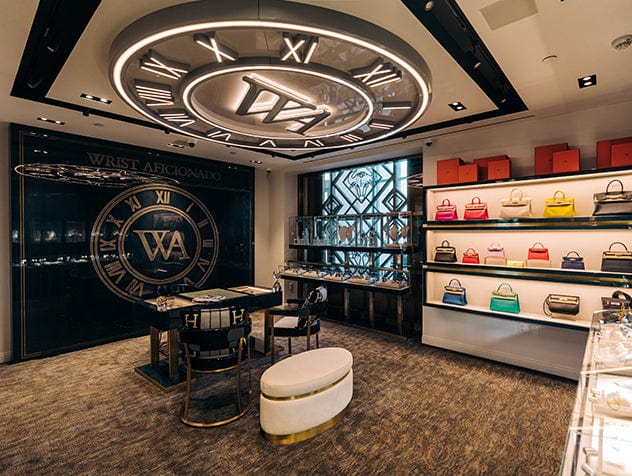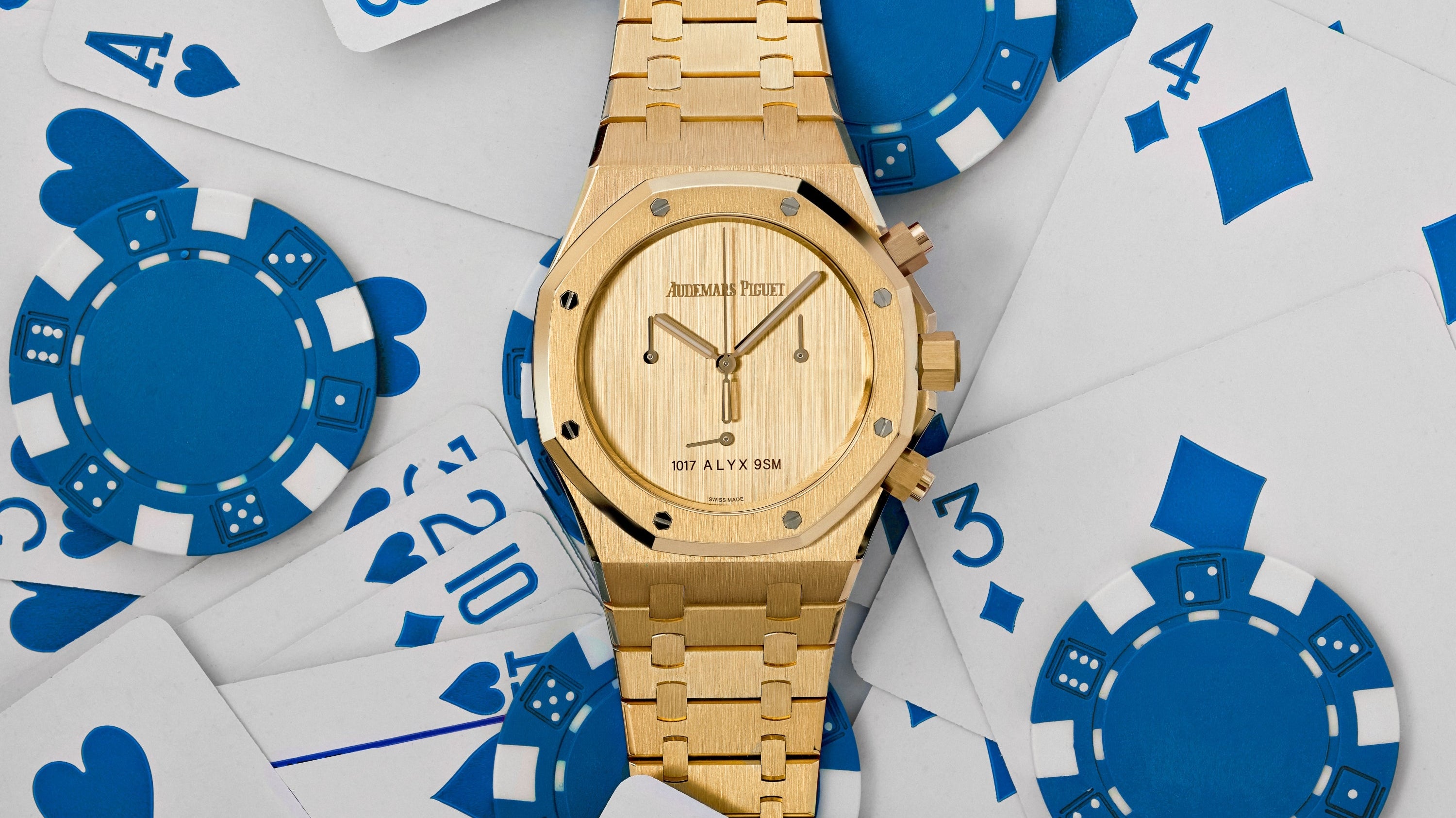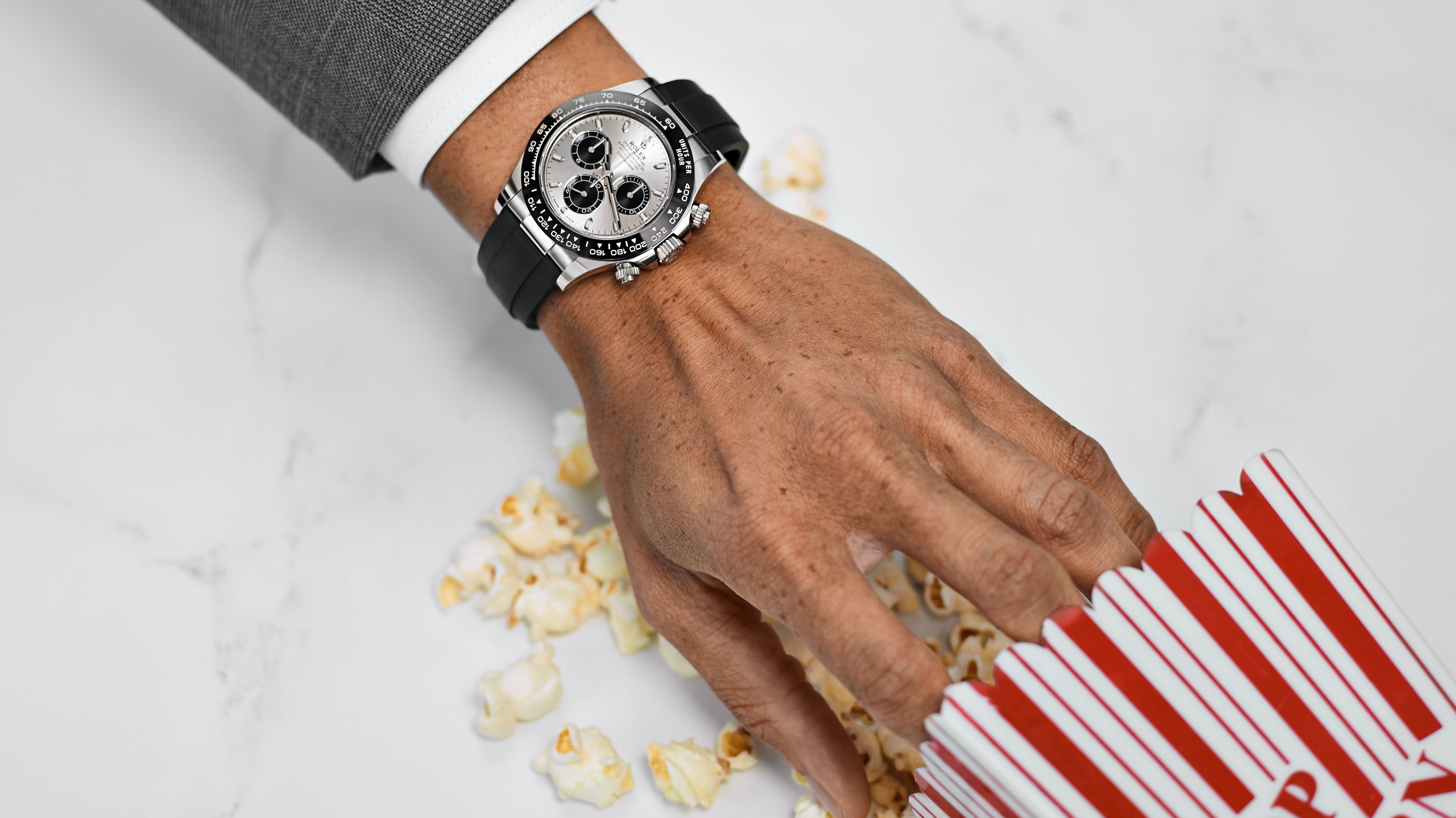On April 2, 2025, U.S. President Donald Trump signed Executive Order 14257, which implemented extensive global tariff policies that included significantly increased tariffs on foreign exports to the United States. Given that virtually all of the watches in America are imported from other countries, the new tariffs have been a highly discussed topic within the industry, as they have the potential to make all watches more expensive for buyers located in the United States. With that in mind, the total impact of the tariffs will not be limited to just U.S. pricing, and their effects have the capacity to reverberate throughout the entire watch industry.
About U.S. Tariffs and Luxury Watches
Tariffs are taxes that are imposed by governments on items imported from other countries, and trying to fully understand every aspect of the global tariff system is more difficult than trying to comprehend the mechanics behind a Patek Philippe Grand Complication. With that said, since the United States imports the vast majority of its watches at every segment of the price spectrum, the new tariffs will effectively make it more expensive for watch brands to sell products here in America, simply due to the additional fees that the U.S. government is now imposing on imported foreign goods.
As part of the new global tariff policies, a 10% universal tariff has been applied to all goods being imported into the United States (with some exceptions). However, the policies also include additional reciprocal tariffs that will be applied on top of the standard 10% universal tariff, and the various reciprocal tariff rates differ significantly from one country to the next. The majority of luxury watch brands are based in Switzerland, and an additional 31% reciprocal tariff is slated to be applied to all Swiss exports. Meanwhile, goods from countries located in the European Union will be hit with a 20% reciprocal tariff, Japanese exports will be charged a 25% reciprocal tariff, and items imported from China will be assessed a massive 125% reciprocal tariff when entering the United States.
Following the announcement of Trump’s new global tariff policies, several countries had their reciprocal tariffs temporarily suspended in order to allow time for trade negotiations. Among these were Switzerland, Japan, and the European Union; however, China was not among the list of temporary suspensions, and retail prices of goods imported from China have already started to spike in response to the new reciprocal tariff policies. That said, beyond any changes to U.S. prices, the tariffs have the potential to have a much more widespread impact on the global watch industry that can influence the availability of certain models, consumer behavior, and even the ownership of brands.
How Will the United States Tariffs Impact the Watch Industry?
In the simplest of terms, the new tariffs will make it more expensive for virtually all watch companies to sell their products in the United States, although the actual impact of the tariffs will differ significantly from one brand to the next, and even most American watch companies won’t be shielded from their effects. Since the tariffs are only a tax on the value of goods being imported to the United States, their impact on watch retail prices can differ substantially depending on the size of a brand and its structure.
Different Impacts for Different Types of Watch Brands
For a company like Rolex that is based in Switzerland and is one of the world’s most vertically integrated watch manufacturers, the new tariffs will have zero impact on the brand’s production costs, and they will only change how much it costs Rolex and its retail partners to import the watches into the United States. Additionally, since the new tariffs are exclusively a U.S. policy, Rolex only needs to account for the higher tariffs on inventory that it plans on selling within the United States, and watches that are sold anywhere else in the world would be entirely free from their effects.
On the other hand, an American watch brand that assembles its watches in the United States using components sourced from different foreign manufacturers faces the total opposite situation compared to a company like Rolex. Once the brand’s watches are complete, they are already in the U.S. and not subject to further tariffs, but in order to first create the watches, the brand must first import the components and pay the accompanying tariffs before a watchmaker can even start the assembly process. When tariffs on foreign goods increase, the actual cost of producing these watches becomes proportionally higher, and American watch brands relying on imported parts will likely be put in the most difficult position by Trump’s new global tariff policies.
The Importance of the U.S. Watch Market
The majority of the world’s most famous luxury watches are produced by Swiss brand, which means that popular companies such as Rolex, Patek Philippe, Audemars Piguet, and Richard Mille could hypothetically avoid the new U.S. tariffs altogether by simply not selling any watches in America and instead focusing on other key markets. However, the United States is far too important for the Swiss watch industry to completely ignore, and it has been the world’s number-one consumer of Swiss watches (and therefore also Switzerland’s biggest export market) since 2021.
According to an official report published by the Federation of the Swiss Watch Industry (FHS), the United States spent over CHF 4.372 billion on Swiss luxury watches last year in 2024, and this represents a value that is more than twice what was spent by its second largest market, which was China at CHF 2.053 billion. It is precisely for these reasons why the reciprocal tariffs on Swiss exports to the United States have been temporarily suspended to allow time for trade negotiations to occur, although the 10% universal tariff has already been put into effect, and some watch brands have increased their U.S. prices to compensate for this change.
How Will The Tariffs Impact Watch Prices?
Higher tariffs naturally result in increased prices for consumers, and since Swiss luxury watches are inherently rather expensive items, the new 10% universal tariff has already forced some brands to react with price adjustments across their catalogs. Swatch Group (which owns luxury watch brands such as Omega, Breguet, and Blancpain) has implemented a U.S. price increase of 7% to 10% in order to compensate for factors like tariffs, the high price of gold, and a weak exchange rate for the U.S. dollar against the Swiss franc. Similarly, even Rolex (which just increased its prices at the beginning of the year) raised its U.S. retail prices again on May 1, 2025 by an average of approximately 3% in response to the new 10% universal tariff.
With the 10% universal tariff already in place, we will likely continue to see brands adjust their U.S. retail prices, and future releases will also be characterized by higher costs for U.S. buyers. That said, what is more concerning for both Swiss watch brands and collectors is the 31% reciprocal tariff that would be applied on top of the existing 10% universal tariff if trade negotiations fail to find a resolution. However, even in this worst-case scenario with a whopping total of 41% in tariffs for Swiss watches imported into the United States, it is highly unlikely that we would actually see quite this extreme of a figure reflected in the percentage increase for U.S. retail prices, provided that other factors like a weakening U.S. dollar don’t force brands to adjust their pricing further.
Import Value vs. Retail Value of Luxury Watches
One important factor to consider is that tariffs are based on the value of the goods being imported, rather than the retail prices that the brands charge for them, and this means even an additional 31% reciprocal tariff on Swiss watches won’t likely lead to a proportional 31% increase in their retail prices. Brands operating with large margins will be able to more easily redistribute the impact of the tariffs, but another factor that convolutes matters further is that watches consist of numerous different parts, and tariffs for them are handled a bit differently than something that is a singular object.
As outlined by the United States International Trade Commission in Chapter 91 of its official Harmonized Tariff Schedule for the U.S. (HTSUS), the calculation of import duties on watches requires them to be listed as the sum of separate values for their key components, which are explicitly listed as being the movement, case, strap/band/bracelet, and battery (when applicable). Since even a simple three-handed mechanical watch typically consists of more than a hundred individual parts, a required list of just four components initially seems a bit simplistic. However, things quickly get complicated since each of these four parts is taxed at a different rate, and the specific rates are determined by various details about the watch, such as the materials used in its construction and even the number of jewels in its movement.
Distributing the Burden Across the Industry
Some Swiss brands will pass on the entire financial burden of the tariffs to their customers by raising U.S. prices to fully compensate for the higher cost of selling watches in America. That being said, this strategy is really only available to brands operating on the high-end side of the spectrum, as they operate with greater margins and fundamentally cater to a less price-sensitive buyer. Anyone who is already committed to paying six-figures (or more) for a Greubel Forsey or Jacob & Co. is far more concerned about getting the exact watch they want, rather than the comparative value proposition it presents, and necessary price increases can more easily be incorporated into these brand’s catalogs.
Other watch brands will try to absorb or redistribute the burden of the tariffs in order to maintain their respective price points and not alienate existing customers. Despite enjoying rock-solid global demand with numerous models trading hands on the open market for values above their retail prices, even Rolex made the decision to absorb some of the impact of the 10% universal tariff and distribute some of the financial burden among both the supply and demand sides of the market. Although Rolex didn’t disclose how much profit it will be forgoing, the brand’s authorized retailers will be giving up 1% of their margins (a decrease from 34% to 33%) in order to keep the inevitable retail price increase to approximately 3% across its catalog.
The Impact of Tariffs on the Secondary Watch Market
Since a significant portion of the secondary market is influenced by what takes place at a retail level, it would be virtually impossible for the new tariffs to not have an impact on the pre-owned sector of the luxury watch industry. Aspects of both supply and demand will be affected by the increased import duties, and since changes in the primary market ultimately influence what happens in the pre-owned sector, the impacts of the tariffs will likely end up playing out a bit differently when it comes to both the price and availability of pre-owned luxury watches in the United States.
Decreased Availability of Pre-Owned Luxury Watches
Should trade negotiations be unsuccessful and an additional 31% reciprocal tariff is imposed on Swiss exports to the United States, it is highly possible that some watch brands may shift a portion of their focus towards other key markets, and subsequently reallocate some of their watches (particularly the models that would be subject to high import duties) to countries with trade policies that offer a more lucrative arrangement. If this does occur, the number of new luxury watches entering the United States will decrease, and this will result in fewer examples available on the secondary market.
Even if Swiss brands do not end up reducing the number of new timepieces that will be sold within the United States, many American collectors and secondary market dealers source watches from all over the world, and the higher tariffs may make it cost-prohibitive for U.S. buyers to purchase certain watches from overseas vendors. Additionally, with the new tariffs directly resulting in higher U.S. retail prices, a greater number of buyers may turn their attention to the secondary market in the hopes of finding monetary savings, and this increase in demand for pre-owned luxury watches will only further decrease their availability.
Pre-Owned Luxury Watch Prices Will Increase
Given that tariffs directly contribute to higher retail prices, it is reasonable to assume that we will also see the average cost of pre-owned luxury watches increase as a result of the new U.S. policies. Simply put, iconic models with enduring designs like the Rolex Submariner and Audemars Piguet Royal Oak enjoy a fairly consistent demand, and when these watches become more expensive to purchase at a retail level, prices for examples on the secondary market are also likely going to increase. The extent that secondary market prices might rise will largely be dictated by global demand and the availability of each model, but it’s hard to imagine a scenario where secondary market prices would categorically decrease, given that all brand-new luxury watches just became more expensive for U.S. buyers.
One other point to consider is that secondary market dealers typically source their inventory from the general public, and this means they buy and sell watches at open-market prices, rather than purchasing their inventory at a wholesale rate and selling it for an agreed upon markup like an authorized retailer. While secondary market prices have recently been going through a correction following several years of inflated values caused by the COVID-19 pandemic, we still aren’t likely to see pre-owned prices for blue-chip classics reach too far below their retail values, unless a brand becomes incapable of selling its watches at their new higher retail price points.
A Continuously Evolving Situation
It’s important to note that the recently announced United States tariffs are still a developing story, and the situation might end up shaping out to be radically different based on what gets decided over the course of the next couple months. At this point in time, many details are still up in the air, and it is still a bit too early to tell where all the chips are going to land once the trade negotiations have concluded. With that in mind, given that the 10% universal tariff is already in place and reciprocal tariffs are being charged on imported goods from other countries, there is a strong possibility that we will see some additional increase in U.S. tariffs on Swiss watches.
Between how the United States International Trade Commission calculates tariffs on watches and companies’ abilities to redistribute some of the financial burden, it is highly unlikely that American buyers will actually find themselves paying nearly a third more for watches in the event that an additional 31% reciprocal tariff ends up being applied to Swiss exports entering the United States. However, preliminary financial projections estimate that the consumer-facing impact of the scheduled tariffs will be a retail price increase of anywhere between 10% and 15% for U.S. buyers, and this ultimately works out to quite a lot of money when you are dealing with timepieces that cost hundreds of thousands of dollars.


